Enthalpy, specific heat and isentropic flows 1 Definitions
advertisement
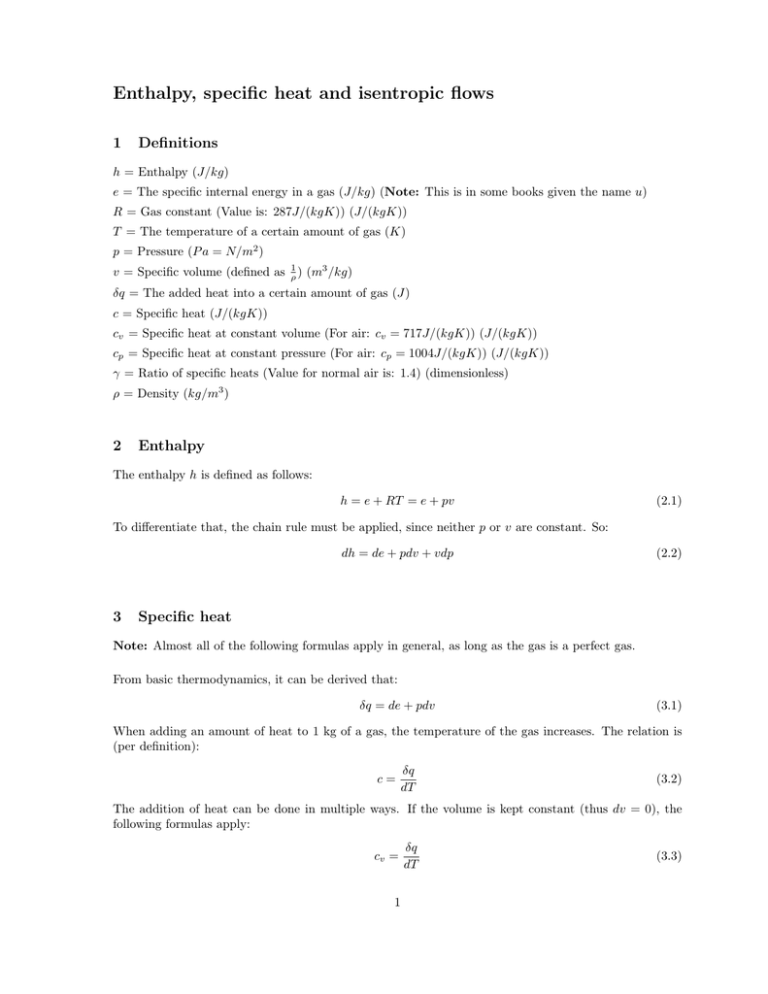
Enthalpy, specific heat and isentropic flows 1 Definitions h = Enthalpy (J/kg) e = The specific internal energy in a gas (J/kg) (Note: This is in some books given the name u) R = Gas constant (Value is: 287J/(kgK)) (J/(kgK)) T = The temperature of a certain amount of gas (K) p = Pressure (P a = N/m2 ) v = Specific volume (defined as ρ1 ) (m3 /kg) δq = The added heat into a certain amount of gas (J) c = Specific heat (J/(kgK)) cv = Specific heat at constant volume (For air: cv = 717J/(kgK)) (J/(kgK)) cp = Specific heat at constant pressure (For air: cp = 1004J/(kgK)) (J/(kgK)) γ = Ratio of specific heats (Value for normal air is: 1.4) (dimensionless) ρ = Density (kg/m3 ) 2 Enthalpy The enthalpy h is defined as follows: h = e + RT = e + pv (2.1) To differentiate that, the chain rule must be applied, since neither p or v are constant. So: dh = de + pdv + vdp 3 (2.2) Specific heat Note: Almost all of the following formulas apply in general, as long as the gas is a perfect gas. From basic thermodynamics, it can be derived that: δq = de + pdv (3.1) When adding an amount of heat to 1 kg of a gas, the temperature of the gas increases. The relation is (per definition): c= δq dT (3.2) The addition of heat can be done in multiple ways. If the volume is kept constant (thus dv = 0), the following formulas apply: cv = 1 δq dT (3.3) cv dT = δq = de + pdv = de e = cv T (3.4) But if the pressure is kept constant (thus dp = 0), it is slightly more difficult. For that we will use the enthalpy. The following formulas now apply: cp = δq dT (3.5) cp dT = δq = de + pdv = dh − vdp = dh h = cp T (3.6) Between the two specific heat constants are interesting relationships. Their difference can be derived: cp − cv = cp T − cv T h−e RT = = =R T T T And their ratio is (per definition): γ= 4 cp cv (3.7) Specific heat ratio in isentropic processes An isentropic process is both an adiabatic process (δq = 0) as a reversible process (no friction forces). Suppose there is an isentropic process present. It can in that case be shown that: cp dv dv dp =− = −γ p cv v v Integrating that equation and working out the results would give us: ln p2 v2 = −γ ln p1 v1 And since v = ρ1 , it can be derived that: p1 = p2 ρ1 ρ2 γ Using the equation of state ( ρp = RT ) it can also be derived that: p1 = p2 T1 T2 γ γ−1 And by combining these two formulas, one can also derive the following formula: γ γ γ−1 p1 ρ1 T1 = = p2 ρ2 T2 (4.1) These important relations are called the isentropic flow relations, and are only relevant to compressible flow. 2 5 Energy equation We still assume an isentropic process (so δq = 0). Therefore δq = dh − vdp = 0, and since the Euler equation says that dp = −ρV dV we know that dh + vρV dV = 0. However, v = ρ1 so also dh + V dV = 0. Integrating, and working out the results of it, would give: 1 1 h1 + V12 = h2 + V22 2 2 (5.1) And since h = cp T , also the following equation is true: 1 1 cp T1 + V12 = cp T2 + V22 2 2 This equation is called the energy equation. 3 (5.2)
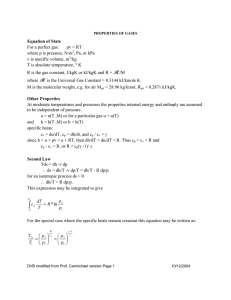
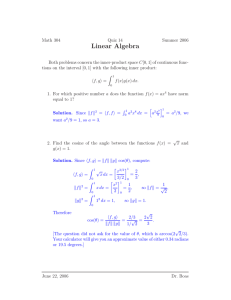
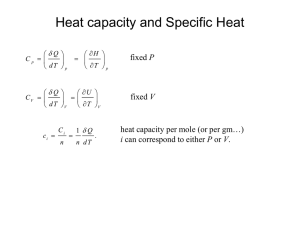



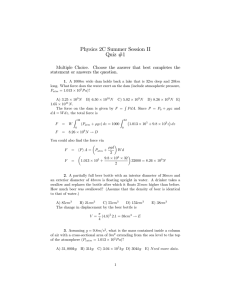

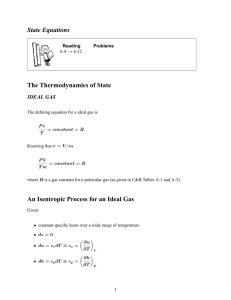
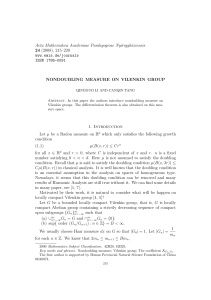
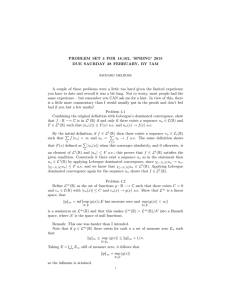
![MA3421 (Functional Analysis 1) Tutorial sheet 8 [November 27, 2014] Name: Solutions](http://s2.studylib.net/store/data/010731566_1-003123d7a559255a591706e674d06d19-300x300.png)